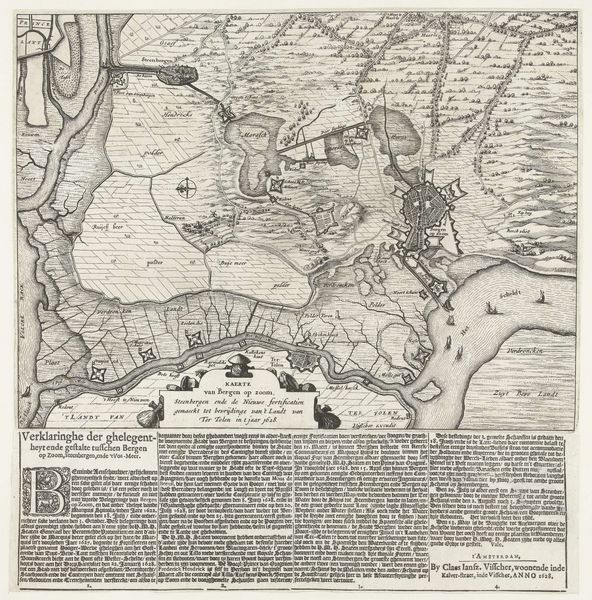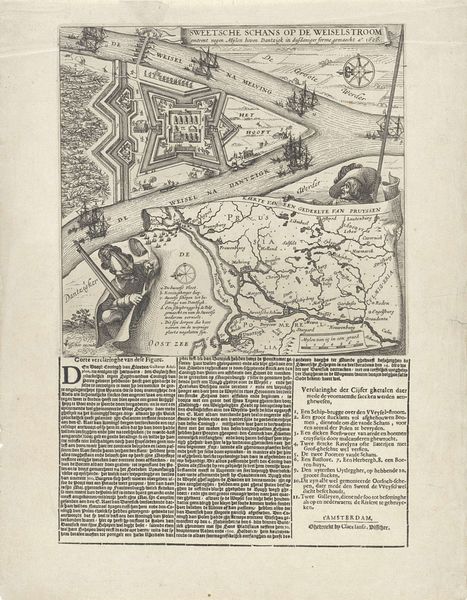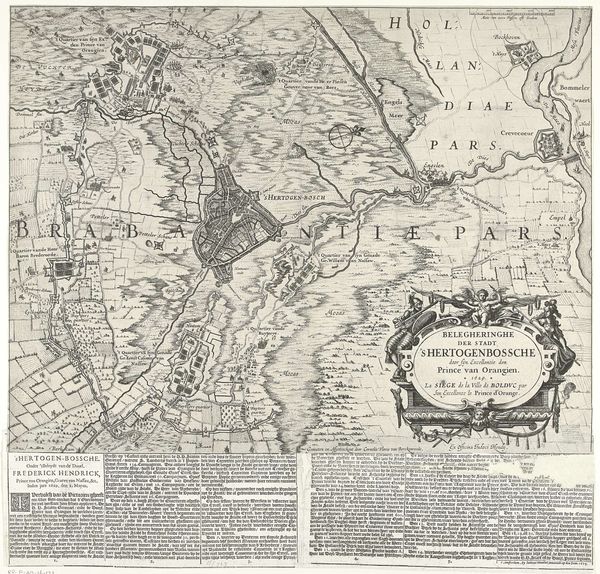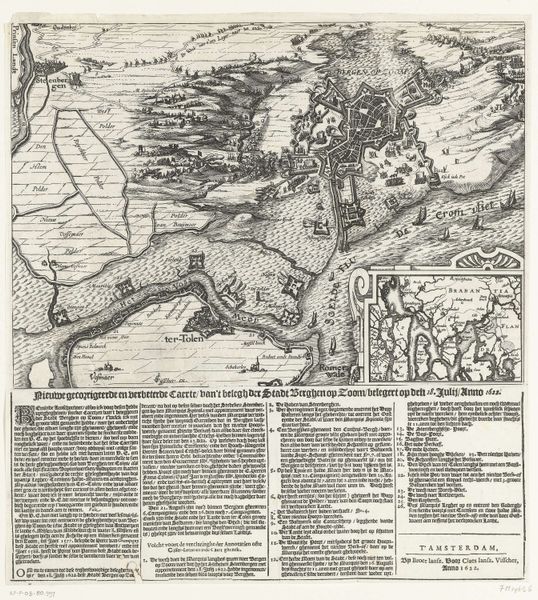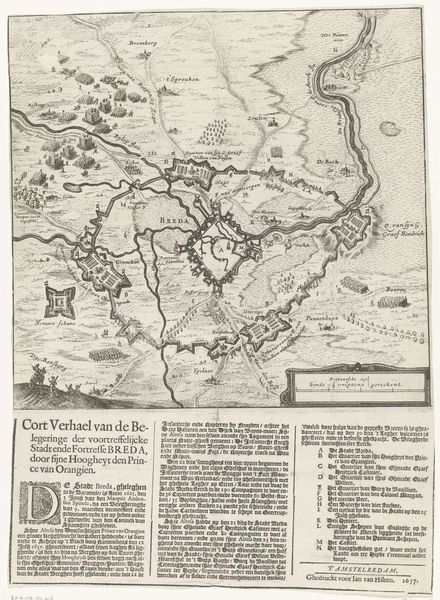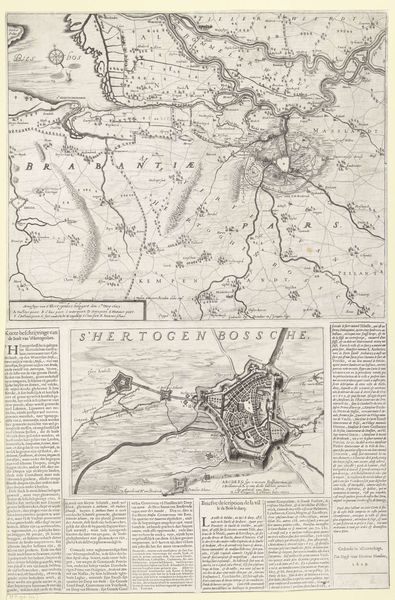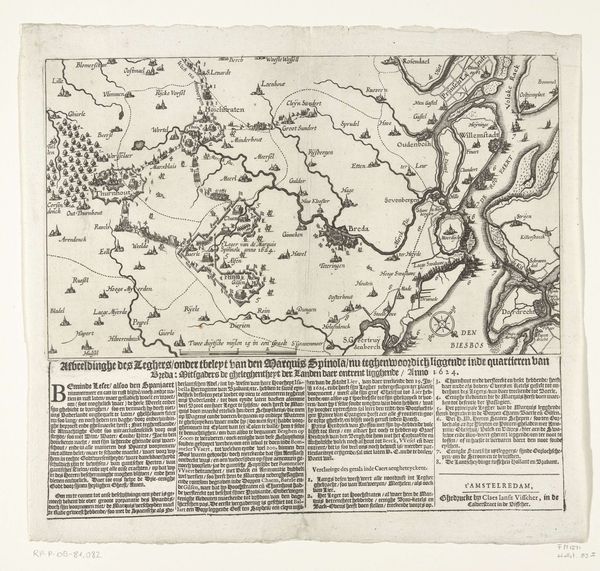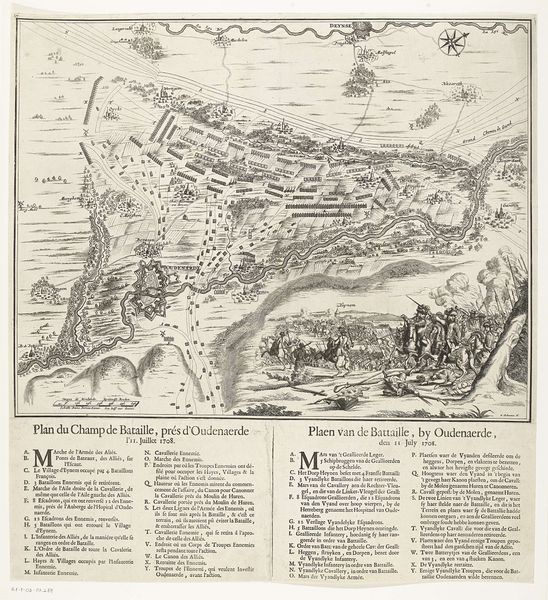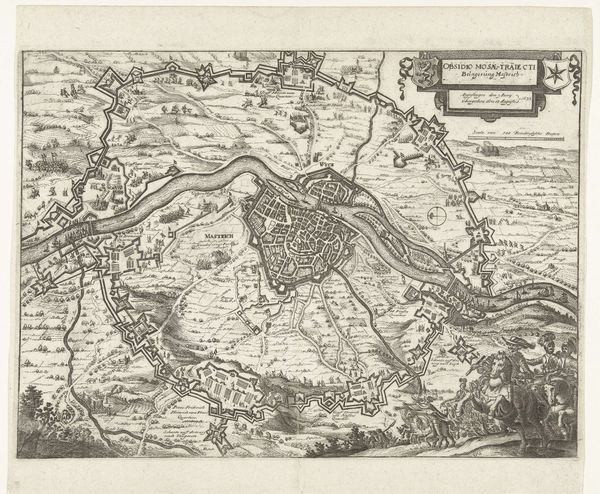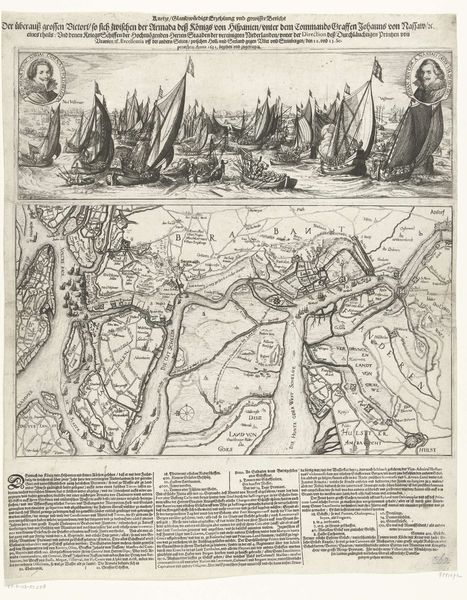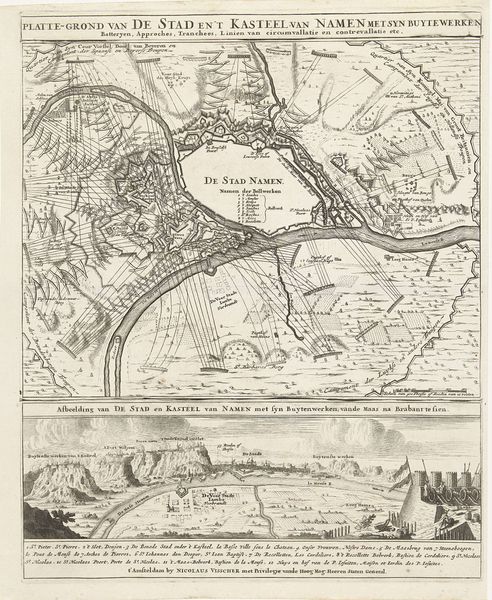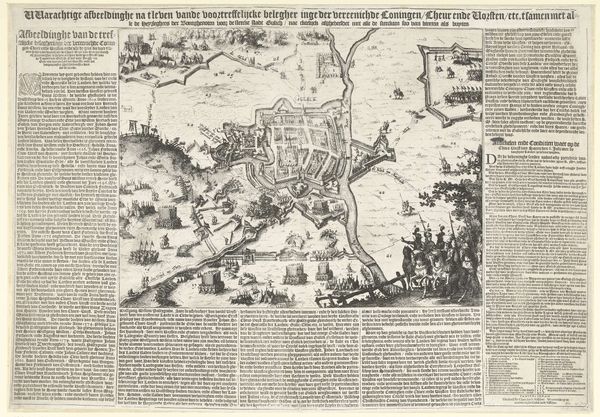
drawing, graphic-art, print, ink, engraving
#
pen and ink
#
drawing
#
graphic-art
#
baroque
#
dutch-golden-age
# print
#
pen illustration
#
old engraving style
#
ink
#
cityscape
#
history-painting
#
engraving
Dimensions: height 427 mm, width 284 mm
Copyright: Rijks Museum: Open Domain
Curator: Before us we have “Ontzet van Haguenau, 1622” an engraving by Claes Jansz. Visscher, currently residing at the Rijksmuseum. The work captures the historical event of the relief of Haguenau. Editor: It’s fascinating—a meticulously rendered landscape evoking a sense of both control and vulnerability, as if we are soaring high above a strategic stage during wartime. The ink strokes construct depth with great precision, a feat of early cartography mixed with baroque dynamism. Curator: Indeed. The overall structure is built upon a binary logic. On one level, there are fine strokes making the details; on the other hand, the composition of landscapes creates different grounds and perspectives, each carrying its historical narrative weight. Visscher organizes this through skillful manipulation of form. Editor: The symbolism here is layered, with strategic cityscapes doubling as symbolic fortresses against encroaching foes. Consider the "forest" imagery for a moment—forests historically served as both refuge and lurking danger, imbued with myths of unknown forces shaping political decisions during the early 17th century. Haguenau's liberation, visualized here, acts as an emotionally potent symbol of resistance against perceived threats to cultural continuity. Curator: Visscher successfully marries function and art, rendering recognizable sites with stylistic embellishments. By the same token, he effectively synthesizes an almost scientific-level view with his artistry in print-making. The deliberate marks showcase a self-referential acknowledgement of the print-making process as itself a key means to communicate knowledge. Editor: The deliberate inclusion of symbolic figures further highlights the human stakes amidst larger geopolitical forces. To its contemporary audience, it was as much a propagandistic device that appealed to patriotism as a visual archive, and invites viewers to connect viscerally with historical narrative and personal reflection on power. Curator: Thinking about it that way underscores that the engraving's effect goes far beyond merely a visual record of geography—it truly shows the power of this piece as a medium of constructing cultural meaning in that era. Editor: Ultimately, analyzing “Ontzet van Haguenau” has amplified how visual language functions across time, echoing far beyond Visscher's careful execution, revealing just how much historical events can symbolize cultural narratives.
Comments
No comments
Be the first to comment and join the conversation on the ultimate creative platform.
